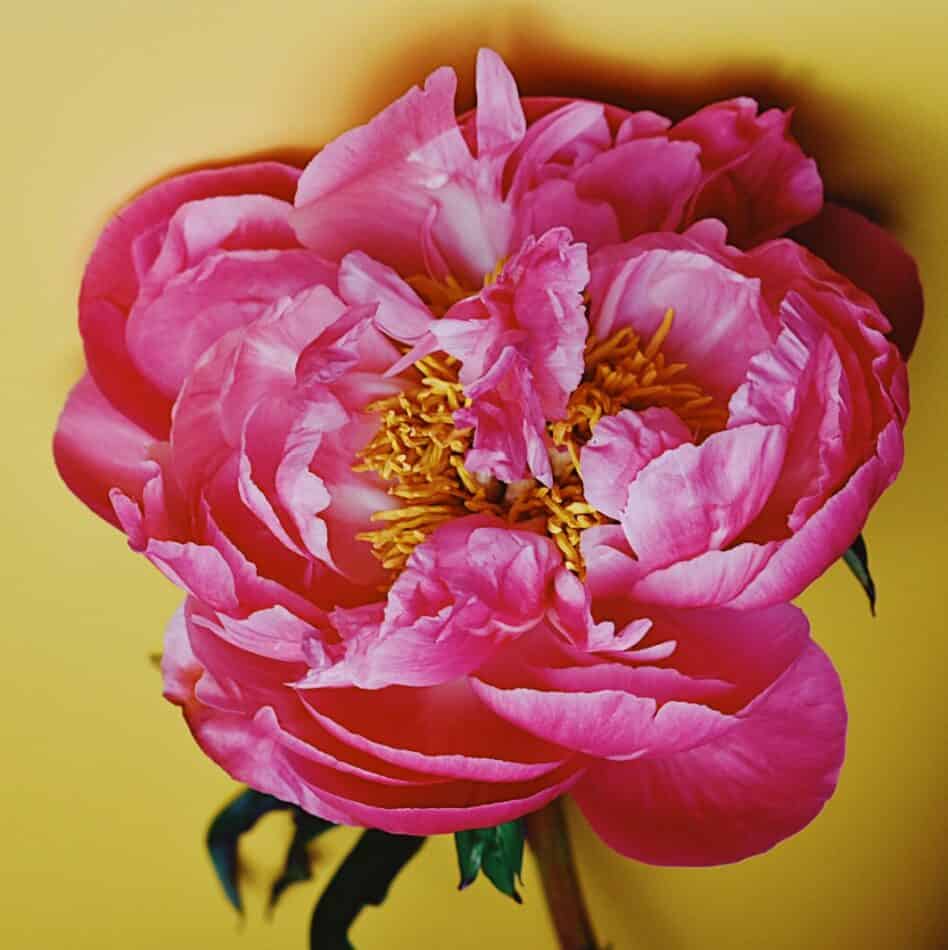The Tropaeolum genus is a hardy herbaceous perennial native to Chile and contains around 80 species of annual and perennial herbaceous flowering plants. It is a variety that will climb over or through other plants in order to reach the sunlight and produce its scarlet, funnel-shaped flowers with clawed petals, creating a stunning display.
Family and Plant Type
Tropaeolum speciosum, also known as Flame Nasturtium, is part of the Tropaeolaceae family. It is a perennial plant, meaning it will continue to sprout back year after year. Producing beautiful flowers, they are perfect for decorating gardens, homes, and other outdoor spaces.
Meaning and Symbolism
The flame nasturtium is thought to symbolize the strong bond between two people. The two funnel-like petals create a strong image of love, devotion and connectedness that this flower brings to the one who can receive and properly interpret it. This flower is also known to represent courage and is a sign of battle.
History, Mythology, and Religious Significance
Flame nasturtiums have been a part of natural history for centuries. Native to South America, it is thought that the plant was brought to Europe in the 16th century by the English explorer Sir Francis Drake. In Japan, the flower has is known for ‘Kagamite-mien’, meaning ‘mirror-seeing’, which is thought to bring good luck. In Christianity, the two petals were considered a sign of the crucifixion.
Flower Varieties and their Defining Characteristics
There are more than 80 varieties of Flame Nasturtium and each of them has its own defining characteristics. These varieties range from the classic red and orange flowers to the more uncommon purple and yellow varieties. Another variation of this stunning flower is the dwarf nasturtium, which has similar characteristics but with smaller petals and blooms.
How to Plant and Grow
Flame nasturtiums need around 4 to 8 hours of direct sunlight on a daily basis and prefer to be planted in a well-draining soil. Despite preferring a sandy soil, they can tolerate a variety of soil types and will even grow in clay soils. The plants prefer mild temperatures and should not be exposed to frost. Water regularly and fertilize every two weeks during the growing season.
How to Pot and Repot
Flame nasturtiums can be grown in pots of all sizes. The bigger the pot, the more space for the roots to grow, which means bigger and better plants. When potting or repotting flame nasturtiums, it’s important to choose a container with adequate drainage holes to prevent waterlogging, which can lead to root rot.
To pot or repot flame nasturtiums, start by filling the bottom of the container with a layer of well-draining potting soil. Then, place the plant in the center of the pot and fill in around it with additional potting soil, making sure to leave about an inch of space at the top to prevent overflow when watering.
If you’re repotting an established flame nasturtium, gently loosen the roots before transplanting it into the new container. Water the plant thoroughly after potting or repotting, and make sure to provide it with adequate sunlight and regular watering to help it establish and thrive in its new home.
Fact Sheet
| Category | Information |
|---|---|
| Family | Tropaeolaceae |
| Plant Type | Perennial |
| Mature Size | 1-3 feet tall and 1-2 feet wide |
| Sun Exposure | Full sun to partial shade |
| Soil Type | Well-drained, fertile soil |
| Soil pH | 6.0-7.5 |
| Bloom Time | Summer to early fall |
| Flower Color | Bright red with a long spur |
| Hardiness | USDA zones 7-11 |
| Native Area | Chile and Argentina |
What we love from Amazon this week
Buy these wonderful flowers directly from Amazon:















